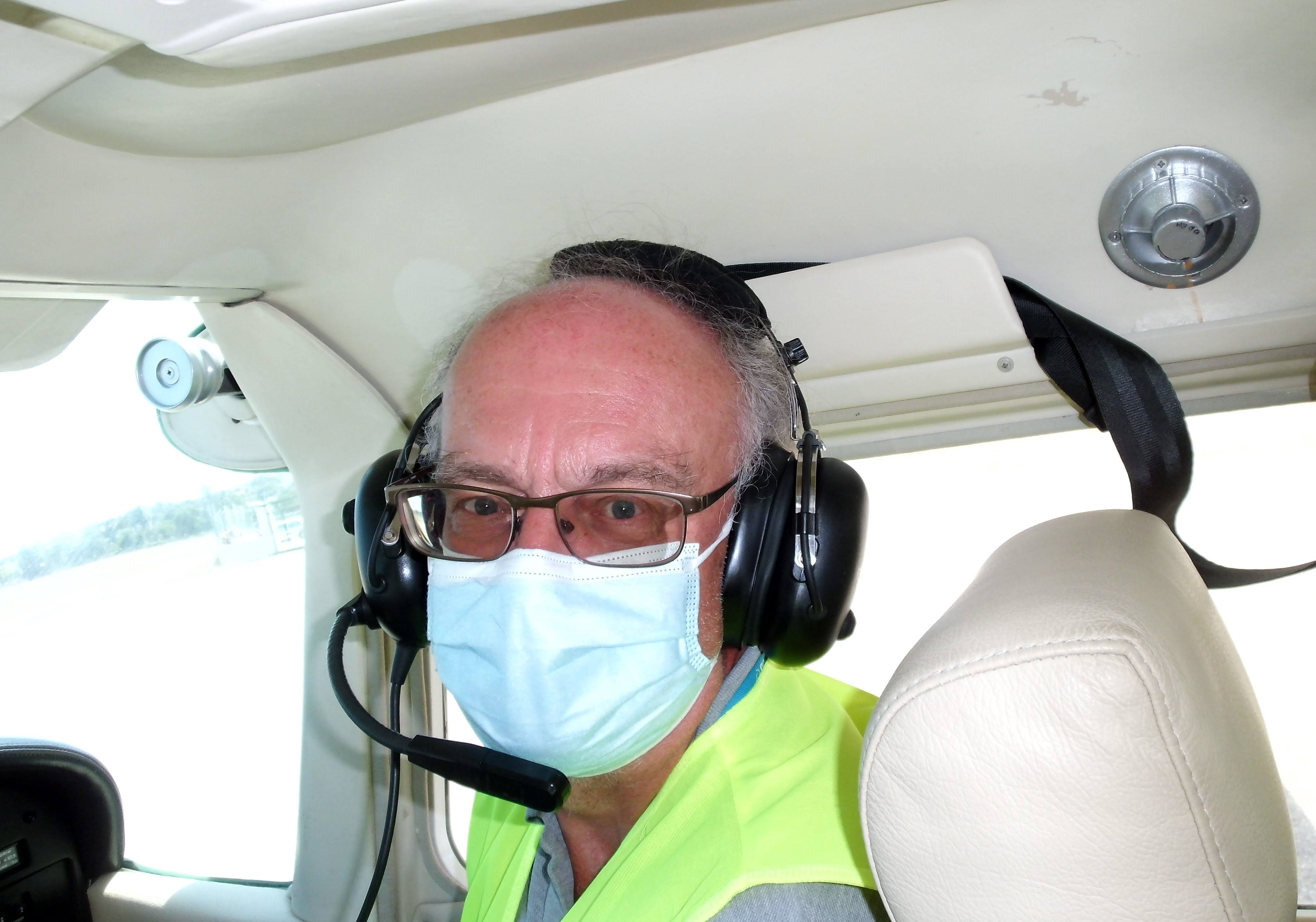|
13th and 14th July, 1934. Hatfield Weather: Awful on the Friday, better on the Saturday.
Story of the Race:
* which formerly belonged to Amy Johnson Starters: 41 (out of 43 entries) Did not start:
Handicapping Madness: Edgar Percival posted the highest average speed of any competitor, at 191 mph, and was eliminated in the very first Heat. Gabrielle Patterson posted the second-slowest average speed of any competitor, and won her Heat. You can see her point. (see her article Air Race Handicapping) |
The Aviators |
| Tariq Ali Khan Aga | ||
|
|
||
| F/O J Beaumont | ||
|
|
||
|
An instructor with No. 5 Flying Training School in 1931; Flt-Lt 1935; Chief Flying Instructor 'for civilians' with Air Service Training at Hamble from 1935. In 1934, "The demonstration was by two of the A.S.T. flying instructors, Fit. Lt. J.B. Veal and F/O. J. Beaumont. This couple have already been seen at the R.A.F. Flying Club Display at Hatfield, and the excellence of their flying commented upon... It would be difficult to over-praise the cleanliness and smoothness of their display." |
||
| Air-Vice-Marshall Amyas Eden Borton, CB, CMG, DSO, AFC | ||
|
|
As a General in 1919, directed Ross Smith to survey the route to Australia, laying the foundations for all the future trips. |
|
|
Capt Hubert Stanford Broad MBE AFC
|
||
|
b. 18 (or 20) May 1897 shot through the neck in WWI by one of Richtofen's Red Circus pilots; [c.f. Angus Irwin]; second in Schneider 1925, to Jimmy Doolittle. In 1928, he spent possibly the most boring 24 hours of his life by beating 'all existing figures' for long endurance flights in light aeroplanes (unfortunately there was no official 'record' to beat as such, the FAI not recognising such things). His log makes, um, rivetting reading: --0--0--0--0--0--0--0--0--0--0-- 5:30pm: Hendon 7:40pm: Gloucester 8:30pm: Coffee and sandwiches 11pm: Over Central London, 3,000ft; watched theatre crowds leaving Midnight to dawn: Remained over Edgeware 2:30am: second meal 4:10am: First signs of dawn 5:10am: Biggin Hill. Saw night bomber in air ... Noon: Stamford. Very sleepy 4:30pm: Ipswich --0--0--0--0--0--0--0--0--0--0-- Having trimmed the controls, Hubert settled down and read 3 complete novels 'to relieve the boredom'. When he finally landed, he he said that he was very stiff with cramp, and promptly went home to sleep. His Moth still had 12 gallons of fuel, so it could have kept going for another 4 1/2 hours... He was named as co-respondent in Beryl Markham's divorce in 1939. de Havillands test pilot until 1935 (Bob Waight succeeded him) - broke the world's speed and height records for light aircraft in the original monoplane Tiger Moth, then joined RAE Farnborough; Hawker test pilot post-WWII; died 1975 FLIGHT MARCH 28TH, 1946 No. 2. CAPT. H. S. BROAD, Senior Production Test Pilot, Hawker Aircraft Co. FOR sheer wealth of flying experience it is doubtful whether there is another pilot in the world to equal Hubert Broad. He has flown everything from diminutive single-seaters to multi-engined--bombers, and including a number of out-and-out racing aircraft. His logbooks, of which he has filled some nine or ten, total over7,500 hours' flying time and 182 separate types. These are honest types—not modifications or different mark numbers of the same aircraft. Many of these he has also flown as seaplanes. Broad, at the age of nineteen, learnt to fly at the Hall School of Flying at Hendon in 1915. The aircraft on which he made his first flight (there was no dual, a pupil did straights across the airfield until he felt it was safe to do a circuit)was the single-seater Caudron with35 h.p. Y-type Anzani engine. Believe it or not, with this tiny horsepower the Caudron occasionally was made to stagger into the air with two people on board, but the passenger had to sit on the wing by the side of the nacelle. Early Days The end of 1915 found Broad in the R.N.A.S. at Eastchurch, and he was on the very first course at Cranwell, which was then a R.N.A.S. establishment rejoicing in the name of H.M.S. Daedalus. His first tour of duty at the front was with No. 3 Squadron at Dunkirk. He was among a number of pilots lent by the R.N.A.S. to the R.F.C. No. 3 Squadron flew Sopwith Pups, and it was while he was on one of these, escorting a bombing raid by 90 h.p. R.A.F.-engined B.E.s, that he was shot through the neck by one of Richtofen's later Goering's—Red Circus pilots. On recovery he spent a while as an instructor at Chingford and then went for his second tour of operations with No. 46 Squadron, who flew Sopwith Camels. The end of the 1914-18 war found Broad instructing at the Fighter Pilots' Flying School at Fairlop. Peace found him, as it found so many other young fellows ,with the ability to fly aircraft superbly and no other means of making a living. But a good living could be made by joy-riding in the early 1920's. First he joined the Avro Company, who were running joy-riding in a fairly big way, and in 1920 went to the Adiron Lakes in America with two Avro 504 seaplanes. These two aircraft saw their last days in Long Island, where they were completely wrecked by an autumn gale. By the next year he was back in England competing in the Aerial Derby air race round London on a Sopwith Camel. He finished 6th.In October, 1921, Broad joined de Havillands. Those who know this great concern now will smile to learn that when it started in those days it consisted entirely of two fabric hangars and a hut at Stag Lane. If memory serves, the capital of the company at that time was £100. The D.H. series numbers, which started in the Aircraft Manufacturing Co. Ltd., were carried on in this new firm, and Broad flew every one of the D.H. designs from the D.H.27 to the D.H.90. In the same period he did a lot of test flyingfor other aircraft constructors. He did the W.10, Handcross, Hendon, and some others for Handley Pages, the Parnall Pipit and the Saunders A. 10 fighter. On the Gloster Grebe he ran into wing flutter for the first time (this trouble, in those days, was on a par with the compressibility troubles we have now). Seaplane testing Another big job he did was most of the development work on the Gloster II and III racing seaplanes. Over a period I used to go with him to Felixstowe regularly. As a Press man I was forbidden the precincts of the R.A.F. seaplane station, but there was a perfectly good Great Eastern Railway pier alongside the station. I used to climb over the fence and watch the proceedings from the pier head. Broad nearly lost his life there one day in October,1924. As he was landing the Gloster II a forward strut to the floats collapsed, and the aircraft turned completely over. Mrs. Broad was watching from the shore, and it seemed a very long time before Hubert appeared on the surface. In 1925 Hubert Broad flew the Gloster III racing seaplane in the Schneider Trophy contest which was held that year over Chesapeake Bay in America. This was the race in which Henri Biard, flying the SupermarineS.4—the true forerunner of the Spitfire—crashed in the water with wing flutter. Broad finished this race second to Jimmy (now General) Doolittle. That must have been a vintage generation, because many names from that period have found their way into the high-spots of this last war. With the advent of the D.H. Moth in all its variants, Broad was to be seen performing aerobatics at most flying club meetings and entering many of the races. These included the King's Cup Race, which he won in 1926. He was flying a delightful Cirrus I Moth, which was a study in ivory and red. His average speed over the whole732 miles was 90.4 m.p.h. His piece de resistance in aerobatics was a perfectly formed big loop, the base of which was only some 150ft from the ground. It was a joy to behold, but very dangerous to perform. Broad had sufficient sense to realise this and sufficient courage to stop doing it. "Hooked" It was during an aerobatic show that Hubert had his closest shave in a life packed with incident. And it was so simple. Flying a D.H. Tiger Moth with no one in the front seat, he did a slow roll—a stunt at which he was a master. The safety belt in the empty cockpit was loosely done up. While the Moth was inverted the belt hung down and, as the aircraft turned the right way up again, the belt came back over the joy-stick. The result was that Broad had only about 1 1/2 inches of stick movement; but, nothing daunted, he made a sort of tail-up, seaplane landing. In this connection it is to be remembered that there were no lovely 2,000-yard runways on which to this sort of thing. In those days there was not a single runway available in Britain; not even for the take-off of over-loaded aircraft for long-distance records! Another unhappy moment occurred when he found the tail trim (the incidence of the whole tailplane was adjustable)of a D.H.34 had been connected in reverse. By a good deal of jockeying he managed to get into Northolt. On yet another occasion a careless mechanic left a screwdriver jammed in the chain and sprocket of the rudder actuating gear. This necessitated a down-wind, crosswind, finishing up into-wind landing at Hendon airfield, because that was a bit bigger than Stag Lane. One of the prettiest little aircraft he ever flew was the original D.H. Tiger Moth monoplane. This was tailored exactly to fit Broad. Physically he is not of big stature and few other pilots could get into the machine. In the front of the cockpit was a bulkhead which had two holes just large, enough for the feet to be threaded through, and these holes had to be padded with sorbo rubber so that Broad's shins did not get barked while landing and taxying. Springing was almost non-existent. Span was22ft 6in and length only 18ft 7m. In August, 1927, on this machine he broke the world's record for light aircraft for both speed and height. For the former the figure was 186.47 m.p.h., he having taken19 min 59 sec to cover the 10 km, and for altitude he reached 20,000ft in just 17 min. A year later he took two more world's records on the D.H. Hound. In 1935, after 20 wonderful years of service, he left de Havillands and later did some flying for the Air Registration Board. From here he went to the Royal Aircraft Establishment and finally joined Hawkers to be in charge of all their production testing at Langley. He will be 50 in a matter of a few weeks, yet every day sees him at oxygen height testing Tempest IIs. As he says, he has gone from 35 h.p. in the Anzani to over 3,000 h.p. in the Centaurus and Sabre VI, and from 2 ½ lb/sq ft in the Caudron to 40 lb/sq ft in the Tempest II. |
|
Mr Harry F J Broadbent
|
Australian record-breaker (solo round-Australia record in 1931), born 1910. Listed polo, tennis, golf and cricket among his other pastimes. |
|
|
Lt Owen Cathcart Jones
|
||||||||||||||||||||||||||||||||||||||||||||||||||
Born 5th June, 1900, London (definitely not Canadian, despite some nasty rumours).
|
||||||||||||||||||||||||||||||||||||||||||||||||||
Capt Robert George Cazalet
|
|||||
|
Flt-Lt Nicholas Comper
|
||
|
|
lecturer at the Cranwell Engineering Laboratory, ex Cambridge University. Designer of the Comper Swift; died in 1939 after a practical joke went wrong |
|
|
Mr Arthur Harry Cook
|
||
|
b. 29 May 1909 in Bletchley, Bucks; educated at Bletchley Grammar. In 1932, worked for Beacon Brushes Ltd, Bletchley; apparently, brush-making is Bletchley's oldest large-scale industry and Beacon Brushes was formed in 1926 by 'Jack Cook and his sons'. See http://www.discovermiltonkeynes.co.uk Arthur's father was called Arthur John Dennis Cook, but anyway by 1943 our Arthur was 'Works Manager and Joint Managing Director' of the firm, based at Church Farm, Wavendon, Bucks. Which is near Bletchley (that's enough mentions of Bletchley).
Air Transport Auxiliary in WWII
d. 1980 |
| Flt-Lt Edward Hugh Markham David | ||
|
I think this must be Flt-Lt (later Sqn Ldr, Wing Cmdr from 1939, Grp Capt, CBE) Edward Hugh Markham David, who served in the Navy in WWI, as a cadet at Osborne in 1914 and Dartmouth, and a midshipman in the 'St Vincent', 'Whiteley', and 'Revenge'. He was one the very first tranche who trained at RAF Cranwell when it opened in 1920. b. 10 Jan 1901 in Monmouth, he was posted to Iraq in 1921-25 and Aden in 1932-4, then became Adjutant of 604 (County of Middlesex) Squadron, Auxiliary Air Force. DFC in September 1941; retired and moved to Malta after WWII; his daughter Diana Elizabeth Markham married in 1952. d. 1957 |
|
Capt (later Sir) Geoffrey de Havilland O.M. K.B.E A.F.C Hon.F.R.Ae.S |
||
| Geoffrey de Havilland - Wikipedia has his story |
|
Mr Geoffrey Raul de Havilland
|
||
|
Geoffrey Junior, aka 'Young D.H.' born in 1910 and learnt to fly at Stag Lane at a tender age. Took over as chief test pilot at de Havillands when Bob Waight was killed. Second Brit to fly a jet-propelled aircraft on its first flight, the Vampire in 1943. Killed when the second DH108 Swallow broke up and crashed in the Thames estuary in 1946. Flight 18th April 1946 As a test pilot young D.H., as he is universally called,has not an exceptionally long history. He took over the chief test pilot's position in October, 1937, when R. J. Waight unfortunately lost his life on the T.K.4. Being, however, the son of his illustrious father, Sir Geoffrey de Havilland, who designed, built and test flew his own aircraft from 1911 onwards, young Geoffrey can be said to have been ''in the industry'' from the very cradle. It is not generally known that Sir Geoffrey took his R.Ae.C. ticket No. 53 in February, 1911, on the second machine of his own design and construction, and that he has made many of the first flights on new D.H. types right up to the Moth Minor in 1938. Geoffrey's first flight is lost in the dim past, but certain it is that at the tender age of six he was flying with father at Hendon in a D.H. 6 (also known as the Clutching Hand). When 18 years of age he left school and came to de Havillands as a premium apprentice for 4 years and learnt to fly on Moths at the firm's reserve training school. After spending two years in the drawing office—much of the time being spent looking out of the windows envying the pilots—he joined the Air Operating Company, who were doing a lot of air survey work in South Africa. This, however, gave him but very little flying, and at the end of six months, he came back to England to become a flying instructor to the D.H. Technical School. The aircraft were wooden Moths built by the students. In 1929 he took his B licence; a very simple business in those days. Some 20 or 30 hours' solo flying, a little cross-country work, a simple "Met" exam, and about one hour's night flying at Croydon was sufficient to qualify. In 1934 Capt. Hubert Broad was chief test pilot of de Havillands, and Bob Waight looked after the production side. There was so much work, however, that Geoffrey was given the opportunity to lend a hand testing Tiger Moths, Dragons, Rapides, Express Air Liners, and Hornet Moths. Broad left the company in 1935 and Waight took over, starting, with the Dragonfly and later the Albatross. It was during the period when the prototype Albatross was going through its development flying that Waight lost his life, and de Havilland took over as chief test pilot. Nobody could have taken on a more interesting or more complex job because the Albatross was completely experimental from tip to tail. Engines were new, construction was new, and the layout was extremely advanced. He had a curious experience on the Albatross. While its strength was ample for all flying loads, some unfortunate drilling had weakened the fuselage under ground loads, and shortly after landing from a test flight the machine broke in halves on the ground. When war broke out lie was busy testing Oxfords and Flamingoes, but when things became desperate at the time of the Battle of Britain, de Havillands did a big job doing emergency repairs to shot-up Hurricanes. Dick Reynell of Hawkers came over and gave Geoffrey the "know how" on Hurricanes. A little later Dick went out on operations with his old squadron (No. 43) and was, unfortunately, shot down.' He was an excellent test pilot and a gallant gentleman. Improvised Runway Geoffrey flew the first Mosquito at Hatfield on November 21st, 1940, but he is more proud of the first flight of the prototype Mosquito fighter. This was built at a dispersal factory with no airfield. To save some six week's wasted time in transport and re-erection at Hatfield, Geoffrey used local fields by having bridges built over ditches to give him a 450yd run for take-off, and then flew the fighter to Hatfield. He is, of course, one of the only two men in Britain to have made first flights on jet-propelled aircraft. The Vampire was flown for the first time on September 21st, 1943, but Geoffrey had already flown the Gloster E.28 at Farnborough. The first airing of the Vampire proved it to be a tribute to the D.H. design and aerodynamics staff, as it behaved almost exactly as they had forecast. There was, however, somewhat of an aileron overbalance which limited the speed to 250 m.p.h. and a rather severe tip stall. Geoffrey de Havilland had made a number of investigation flights on Mosquitoes for compressibility effects, but on the Vampire he has done extensive work. The Vampire, under the effects of compressibility, executes a series of sudden high-speed stalls: the path of the machine is similar to an artist's conception of a streak of lightning, and unless the pilot is strapped-in tightly he is likely to be knocked out by hitting the cockpit roof. Geoffrey, with another pilot, has flown the Vampire in tight formation at over 500 m.p.h., and to investigate snaking, which is causing considerable trouble on most jet aircraft, he has flown the Vampire with rudder locked. Like most of the test pilots, he is living on borrowed time, they having at some stage of their careers had close shaves. Strangely enough, Geoffrey's nearest go was on about the mildest type he ever flew. It was the first production Moth Minor. The prototype had completed its spinning tests, and the same tests on the production model appeared to be only a matter of form. He was flying with John Cunningham (now Group Capt., D.S.O.,D.F.C., and test pilot for the D.H. engine division) at the time. The Minor was put into a spin at 5-6,oooft, but after it had failed to come out in five turns and the engine had stopped, a panic decision was made to abandon ship. Test-flying a Hurricane, too, almost saw him off. This particular aircraft had had a gruelling time in the Battle of Britain, and the whole canopy came off at 4,000ft.hitting him in the face as it blew backwards. At first blind through the amount of blood in his eyes, he flew more by instinct than anything else until he found he could get a little relief by holding his face close to the instrument board. The blood dispersed a little and he was able to land through what appeared to be a thick yellow haze. He wears the scars across his nose to this day, and there was a terrible moment during that flight when he thought he was really blind. On another occasion the oxygen bottle contained only compressed air, and the effects from this were at first blamed on the previous night's party. At the other end of the scale was the test of the T.K.5, a tail-first aircraft built by the technical school. Impecunious at the time, Geoffrey had already mortgaged the bonus for the first flight. Imagine his consternation then when, after roaring the whole length of Hatfield airfield, the machine showed no sign of lifting. The forward elevator was ineffective. The T.K.5 never did fly and was finally abandoned. In the days of peace before the war Geoffrey de Havilland was to be seen at all the air meetings and twice finished 4th in the King's Cup Race flying the TK1 and TK2. |
| Mr Peter Jason de Havilland | ||
|
|
||
| middle son of Geoffrey; both his brothers were killed in flying accidents, but he survived and published his father's autobiography in 1979 | ||
| P/O (later F/O, Flt-Lt) Hugh Robert Arthur Edwards | ||
|
|
||
|
'Jumbo', the famous Oxford rowing coach, younger brother of Cecil
His grand-daughter's husband Gavin has written Jumbo's story, in four parts, starting here: https://heartheboatsing.com/2020/02/17/jumbo-edwards-oarsman-coach-and-raf-pilot-part-i/ |
||
| Mr Charles Exton Gardner | ||
|
|
||
|
Aeronautical engineer 'with his own aerodrome at home in Surrey'. Always nice to have. "Flew to India [in 1936] to compete in the Viceroy's Cup Race" |
||
| Flt-Lt Lewin Edward Alton Healy | ||
|
|
|
|
|
RAF Cranwell, 1922. Twice mentioned in dispatches.
|
||
| Mr Alexander Adolphus Dumfries Henshaw | ||
|
|
|
|
|
b. 7th November, 1912. The extraordinary Mr Spitfire. Leant to fly in (of all places) Skegness. "After 25 hours solo bought a Comper Swift and in the 1933 King's Cup Race won the Siddley Trophy with it." In 1936, still the youngest competitor in the race. d. 24th February, 2007 |
||
| Capt Walter Laurence 'Wally' Hope | ||
|
|
|
|
|
Technical director of Air Freight. b. 9 Nov 1897 in Walton, Liverpool Aged 18, and described as a "trick-cyclist", he was summoned in 1915 for committing a breach of the Realms Act by taking a photograph of one of his Majesty's ships at Barrow; he pleaded not guilty, admitted that he was carrying a camera, and was fined £5. A close friend of Bert Hinkler, he made an extensive search over the Alps at his own expense when Bert went missing on his fatal flight in 1934, but then sued the Daily Mirror when they published their hair-raising account of his exploits, "Captain Hope's Ordeal in the Alps". He said there was "not one word of truth in it." m. 1920 Marjory [Stone] Three-time winner of the King's Cup Race (1927, 1928 and 1932) In the 1926 King's Cup race, "he had to descend at Oxford while racing for home in the last lap with a small “airlock" in his petrol pipe, which effectually put his tiny Moth machine out of the running. He landed in a small field - so small that he found it impossible take off again when his minor trouble had been rectified without pushing his plane through three fields to a broader stretch of country, where he could rise. By this time it was so late that he decided that would abandon the race and go on at his leisure to Hendon. Interviewed at his home in Hendon yesterday, Mr. Hope said: “The only thing that I am really disappointed about is that I feel sure that if this trifling mishap had not occurred I should most certainly have won. For three laps I was racing neck and neck with Captain Broad, with an aggregate speed equal to his - between 90 and 91 m.p.h." Daily Herald At the end of the 1928 race, "Thinking all was over he proceeded to loop and stunt before landing, and having landed switched on his well known winning smile. Suddenly there was a terrific hooting, and Sir Francis McClean in his white Rolls-Royce came tearing across to tell Hope he had not crossed the finishing line... Within 30 seconds Hope was in the air again, discovered the finishing line, landed, and again switched on the winning smile fortissimo." C G Grey Entered for the MacRobertson Race in 1934 (No 24) but didn't take part in the end. m. 1954 Hilda L [Stone or Hunt] d. Oct 1979 - Isle of Wight |
||
| Mr Angus Charles Stuart Irwin | ||
|
|
|
|
|
born in Motihari, India; educated at Marlborough and Sandhurst. RFC in WWI: 2 victories, but was then shot in the foot by a member of Richtoven's squadron. Post-WWI, was "engaged in the estate business" (whatever that means). |
||
| Mr Alfred Charles Morris Jackaman | ||
|
|
|
|
|
A civil engineer from Slough; in 1936 he and Marcel Desoutter decided that an airport at Gatwick might be a nice idea (it was, after all, "outside the London fog area"). He later married Australian-born Muriel Nora 'Cherry' Davies and they ended up near Sydney; he died in 1980, but she survived until 2011 - aged 101. see |
||
| Mr John Daniel Kirwan | ||
|
|
|
|
|
From Perth, 'a student'
|
||
| P/O (later F/O, Flt Lt) Haliburton Hume Leech | ||||
|
photo: 1926, aged 18 |
|
|||
|
Haliburton H Leech was born 16 Apr 1908, in Wylam-on-Tyne, Northumberland. He competed in 6 King’s Cup races – every year from 1929 to 1934. His father, Dr. (later Sir) Joseph William Leech, J. P., was the Sheriff of Newcastle-upon-Tyne, and later its M.P.; at the time they lived in Wylam Hall, which according to English Heritage is a vast “rambling house built in the 15th century with 18th-19th century alterations, since divided into 3 apartments”. Haliburton was the youngest of 3 sons. He went to Harrow from 1922 to 1925, then gained his Royal Aero Club Certificate (No 7993) at Cramlington with the Newcastle-on-Tyne Aero Club, flying a D.H. Moth, on the 10 Apr 1926.
In 1931, Flight described him thus: “… a well-known figure at flying meetings, as his aerobatic demonstrations in the Martlet are always amongst the prettiest to be seen. He entered Cranwell as a cadet in 1925, finally leaving there and being posted to Tangmere in 1927. He was promoted to Flying Officer in July 1929, and in 1930 went to the Royal Aircraft Establishment at Farnborough, and has since been engaged on a great deal of test work, flying a large variety of machines. This year he was selected as one of the members to join the High Speed Flight at Felixstowe preparatory to receiving his training to take part in the forthcoming Schneider Trophy Race, but, much to his disappointment, he was later sent back to Farnborough, as it was found that there were too many pilots in the flight. F/O. Leech has raced on numerous occasions in light aircraft, and is always consistent.” However, during one such aerobatic demonstration, one cynic pointed out that "After all it does not matter if he does crash, as his father is a doctor!” In 1932, he piloted the Royal Aircraft Establishment’s Scarab (a parasol-wing modification of the D.H. 53 Humming Bird) on its first flight.He was posted to the School of Naval Co-operation, Lee-on-the-Solent, on the 1st March 1934, then (as a Flight Lieutentant) to No. 824 (F.S.R.) Squadron, Upavon, on the 8th October 1934.
He was best man at his elder brother Basil's wedding to Grace Luckham in September 1937, then married Miss Ruth Janet Chernocke Elliott (the younger daughter of Mr and Mrs A E Elliott of Little Hill, Bromeswell, Woodbridge) at Eyke Church, Suffolk on 9th October 1937. The happy couple then left by air, from Martlesham, 'for abroad'. He retired from the RAF in September 1938 due to ill-health, and died 5th May 1939, in St Bartholomews Hospital, when he was only 31. Unusually, 'Flight Magazine', who carried innumerable references to his flying displays, carried no news of his death - normally they would have produced a short obituary of someone so well-known in aviation circles. His gravestone (with thanks to the Gravestone Photographic Resource) is in Eyke Church:
His father, Sir Joseph, died a year later. Ruth married a Mr Foster in 1940 and died in 1986 in Ipswich; she was referred to as 'Ruth Janet C Lady Foster'. He competed in loads of air pageants and races throughout the 30s, including: - The Kingston-upon-Hull Air Race, at the Hull Air Pageant which was held to celebrate the opening of the Hull Aero Club clubhouse in April 1930. The 7 entrants were Leech (flying "Miss Perry's D.H. Moth G-AASG" *); Winnie Brown flying her Avian G-EBVZ; Winifred Spooner in her D.H. Moth G-AALK; Ivor Thompson (D.H. Moth G-AACL); Alfred Jackaman (D.H. Moth G-AADX); Robert Cazalet in his Westland Widgeon G-EBRM, and Capt G Thorne in Avro Avian G-AAHJ. Leech finished first but was disqualified for ‘not turning at one of the marks’.
* Miss Violet Perry (seen here), who flew at the Berks Bucks and Oxon Club, is not listed as the owner of G-AASG, though; it apparently belonged to 'Miss M Shillington'. September 25, 1932 saw him coming 3rd in the Yorkshire Trophy Race - "175 and a half miles over two triangular circuits" in the Arrow Active, behind Edgar Percival in a Gull, and Col. Louis Arbon Strange in his Spartan. Later, "F/O. Leech gave one of his thrilling, if not hair-raising, displays on the Arrow Active."
A few weeks later (12 August 1933), he put up the fastest time in the London to Newcastle Race in Richard Shuttleworth's Gypsy-engined Comper Swift G-ABWW, but ended up 5th (of 10) on handicap. He received a cheque for £10 for his effort; the 166.09 mph was "the highest registered speed obtained on any British light aircraft" at the time. In July 1937, he was listed as one of 15 competitors in the Devon Air Race (which also included Alex Henshaw, Connie Leathart, Tommy Rose and Geoffrey de Havilland) but withdrew before the start. In the King’s Cup: 1 - G-EAUM (1929) This aircraft was a real-old-timer, an Avro 534 ‘Baby’, first registered in July 1920. Squadron Leader Harold Payn had raced it in 1922, and R. A. Whitehead (who sold it to Leech) in 1928. Leech, in turn, sold the aircraft to H.R.A. Edwards, and it was finally withdrawn from use in November 1934. 2 - G-AALK (1930) This D.H.60G Gipsy Moth was almost new (first registered August 1929), and belonged to the Household Brigade Flying Club at Hanworth. It was flown by Squadron Leader the Hon. Frederick E Guest in the 1931 race, then went to Wrightson Air Hire, but crashed at Shackend Railway Station near Hawick in April 1937. 3 - G-ABIF (1931) This Southern Martlet 205 had only been registered in January 1931, and belonged to Miss J Forbes-Robinson. Theodore C Sanders flew it in the 1933 King’s Cup race. It was withdrawn from use in 1940, but went to the ATC during WWII, until it was finally cancelled in December 1945. 4 - G-ABVE (1932, 1933) G-ABVE was the only Arrow Active II ever built, registered in March 1932 to Arrow Aircraft Ltd of Yeading, Leeds. Leech flew this aircraft in the 1932 and 1933 races, achieving 137mph. In an extraordinary link with MacRobertson aviator Geoffrey Shaw, they were together in July, 1932: "Six members joined the Yorkshire Aeroplane Club during June, amongst them being Mr. Geoffrey Shaw and Mr. A. C. Thornton. The latter is the designer of the" Arrow Active," and his latest production, the "Active II" has been much in evidence, being tested by F/O.H. H. Leech." After the race, it was stored at Yeading until 1957 before being completely renovated in 1958, with the installation of a 145-hp Gipsy Major engine. It survives, and is now in the Real Aeroplane Collection at Breighton Aerodrome, Selby, Yorks. 5 - G-ACUP (1934) Unfortunately, the registration of this brand-new Percival D.3 ‘Gull Six’ did not prove prophetic; Leech only managed fifth in the heats, despite averaging 160mph. The Gull went on to re-appear in the Kings’ Cup in 1938, flown by H Thomas-Ferrand, and was then sold in Australia in May 1939.
|
||||
| Mr Laurence Lipton | ||
|
|
|
|
|
An engineer, from London Competed in 1933 and 1934 in G-ABVW 'Jason 4', the D.H. Moth he bought from Amy Johnson. |
||
| Wing Cmdr George Edward Lowdell AFM | ||
|
|
|
|
|
Flying instructor at RAF Digby in 1925 (he taught Allen Wheeler to fly, who said of him "How lucky I was with my instructor George Lowdell! Apart from being a magnificent pilot he was the most inspiring teacher"). Instructor with Suffolk and Eastern Counties Aero Club in 1928; later a Wing Commander, and instructor with Shoreham School of Flying. However, in 1932 he was convicted of drunk-driving: "STUNT FLIER FINED CLACTON CARNIVAL SEQUEL George Edward Lowdell, 29, an airman instructor, of Belvedere Road, Ipswich, was charged at Colchester on Friday with being drunk in charge of a motor car. Stanley Elgar, postmaster of Colchester, stated that he was driving his car from Walton-on-the-Naze to Colchester, and just after he had left Weeley he noticed a Morris car in front of him " performing a rather peculiar course all over the road, swerving frequently from the near side to the off. Several times it mounted the margin of the road, and on one occasion two young ladies had to " skip " quickly out of the way. The speed was never excessive. Near Greenstead Rectory the car was pulled up, and witness went to the driver and said: "Do you realise what you have been doing? You have only just escaped death, and narrowly missed killing other people." Defendant seemed dazed, and when told that he could not go on he said he would have to go on, he had to get to Brooklands tnat night. Two police-officers came, and defendant was arrested. Replying to Mr. Frampton, witness said the driver did not give him the impression that he was a very tired man. , Arthur Houston, commercial traveller, Thorpe Road, Tendring, who was proceeding in the direction of Colchester, said defendant's car was '' all over the place." When charged, defendant's reply was so muddled that he could not be understood. Dr. William F. Payne said he came to the conclusion that defendant was drunk. Defendant said he had had some whisky and beer. Defendant, in the witness-box, said he was formerly chief instructor to the Suffolk Aero Club, and was now instructor at Brooklands. He had been giving a demonstration at Clacton. He flew to Clacton, and during the day gave exhibitions of trick flying and joy rides. In the morning there was an accident, and he was up in the air longer than usual at upside down flying in order to amuse the crowd. During the day he had nothing alcoholic to drink, but after he had finished flying at 6.30 p.m. he had five beers. He had had nothing to eat since luncheon, and left Clacton at 8 p.m. After a heavy day he felt queer when in the car, and kept dozing. When he arrived at the police - station he felt 'dead tired," and his whole condition he put down to continuous flying, to having no food, and to the heat of the day. Edwin Freshfield, an undergraduate, and a pupil of defendant, said the stunt flying defendant did that day imposed a great strain. When defendant left Clacton he was very tired, but not drunk. Mr. Frampton submitted that defendant's condition was due to absolute fatigue. The Chairman (Mr. C. M. Stanford) said the Bench were unanimous in finding the case proved. While it might have been only an indiscretion, they had to take serious notice of it, and defendant would be fined £5, with £2/5/9 costs. The Bench appreciated the action of those witnesses who had come forward at their own expense and loss of time to protect the public, and to save the defendant himself from further danger. "
John McKinney kindly tells me that "George Lowdell was an instructor and CFI with the Southern Aero Club at Shoreham. He was one of my instructors and took me for my GFT. |
||
| Mr T W Morton | ||
|
|
|
|
| ?? | ||
| Mr A LT Naish | ||
|
|
|
|
|
Director of Aircraft Exchange and Mart Ltd, Airspeed's sales agents.. Formerly a Flying Officer in the RAF; spent 3 years in the Middle East. |
||
| Mr Carill Stanley Napier | ||
|
|
|
|
|
b. 29 Apr 1907 From Putney, London Son of the famous engine-maker Montague; an apprentice with Westlands in 1929. 'his one recreation apart from flying is the commendable indoor sport of darts. Believes that air-racing is good fun only when taken not too seriously'' Killed in WWII: 29 April 1941, when a First Officer in the Air Transport Auxiliary; buried RAF Halton, Bucks. see https://www.ata-ferry-pilots.org/index.php/category-blog-1939/53-napier-carill |
||
| Mr Evelyn Henry Newman | ||
|
|
|
|
|
ed. Lancing College, then Oriel College Oxford. prev. RAF and RAF Reserve, 1924-33. Later a commercial pilot for Birkett Air Services. Air Transport Auxiliary in WWII see https://www.ata-ferry-pilots.org/index.php/category-blog-1941/418-newman-evelyn-henry |
||
| Mr Victor George Parker | ||
|
|
|
|
|
an Aircraft Engineer from Hertfordshire |
||
| Mrs Gabrielle Ruth Millicent Patterson | ||
|
|
|
|
|
Miss Burr as was, a lady with her own opinions, particularly about race handicapping, which you can read here: Air Race Handicapping. b. 6th July 1905 in Paddington, London, the eldest of four daughters; grew up in Dover, Kent, but her father was a rather peripatetic amateur entomologist and she was educated all over Europe. Was very busy in 1931; described as a 'secretary' [actually, she was the Company Secretary of her mother's family firm of upmarket china and glassware merchants, Thos Goode & Sons], and living in Maida Vale, London, acquired both her aviator's 'A' Certificate (No 9752), and her husband, Mr Arthur L 'Pat' Patterson. At the same time, she also competed in the Ladies event at Reading (May, 1931) - the other competitors were Amy Johnson, Grace Aitken, Pauline Gower, Dorothy Spicer, Susan Slade, Winifred Spooner, Christina Young, and Fidelia Crossley - a historic gathering indeed.
Her son, Ian, was born in 1932 in Eton, Oxfordshire, but Gabrielle and Pat divorced in 1939. In 1938, she wrote an article on the subject 'Would women make good instructors in the event of war'. She, of course, was already a successful instructor, although admittedly her experience was limited, because "a man who is paying for his flying, and whose average age is probably a little greater on that account, is more amenable to reason than the youngster of eighteen to twenty, with his wild oats still unsown." She thought that women instructors would probably cope, though; "The instructor always starts with the advantage of his pupil's spontaneous respect for a (relative) master of his subject, coupled with a very natural wish to shine. The woman instructor has the added advantage that this respect is enhanced by her supposed greater difficulties in acquiring that (relative) mastery and with the instinctive desire of the male to impress the female. By tactfully and subtly indicating the conduct in the air and on the ground which does win her confidence and does impress her, she can obtain it in nine cases out of ten, and in the face of such a proportion she could certainly count on disciplinary measures for the tenth." But she worried whether there would actually be enough women to become instructors; her experience was that women didn't make such good puplis as men. "It is arguable that since of good men pilots only a few make good instructors, amongst women (where the number of good pilots is a lower percentage of pupils) the quantity of good instructors would be so small that there could be no justification for spending public funds in discovering them." The reason for this, she thought, was that "women pilots hitherto have consisted only of those with large enough bank balances".
Flight reported her activities at the time: 19 May 1938: "ROMFORD. Miss Amy Johnson visited the Romford Flying Club last Sunday to present a flag and charter to the National Women's Air Reserve which operates there. There are 125 members of the Reserve, taking flying instruction with Mrs. G. M. Patterson." 15 June, 1939: "Mrs. G. Patterson's G.A.P.A.N. Appointment. All who have come into contact with her will wish to congratulate Mrs. Gabrielle Patterson on her appointment to the Panel of the Guild of Air Pilots and Navigators. This is the first time that a woman has received the appointment. Mrs. Patterson has been a flying instructor for some years and is now leader of the National Women's Air Reserve, the organisation which has been putting in a good deal of flying —and securing no little amount of newspaper publicity—at Maylands Aerodrome, Romford. Mrs. Patterson herself, it may be added, has always shunned any sort of personal publicity. She is, we believe, a first-rate pilot and an extremely capable instructor." She was living in Bristol, aged 34, with about 1,530 hours experience when WWII broke out in September 1939; her son was at Prep. School. Air Transport Auxiliary in WWII - see Patterson, Gabrielle Ruth Millicent (W.14) (ata-ferry-pilots.org) She died relatively young, sadly; having completed a degree at Manchester University in the 50s, she moved to France but fell ill with cancer, moved back to Little Missenden, Bucks, to live with her sister, but died there on 31st October 1968, aged 63. |
||
| Capt Edgar Wikner Percival | ||
|
|
|
|
|
Australian aeronautical genius who ended up in the USA and New Zealand, via Luton. b. 23 Feb 1897 in Albury, N.S.W. In 1915, while training in England, he became only the third person on record to recover from a spin (supposedly, Fred Raynham [q.v.] was the first). He later wrote: "After that I found that spinning was great fun and spun a Bristol Scout the next day. Very much later, on the Western Front, I found a spin was a very speedy way of dropping on the enemy - especially through a handy cloud." Designer, and pilot, of some of the finest racing and record-breaking aeroplanes of all time. "He always flies his rakish Mew Gulls in a soft felt hat and tries to look as much unlike an intrepid birdman as possible, though he has never yet deceived the handicappers by this ruse."
Flight said he "has an uncanny navigational sense in thick weather, but sometimes flies pensively past his destination in 100-mile visibility". Michael Madigan wrote: "It was very difficult to resist his puckish humour and not to fall under his spell... In his early flying days he had a fox-terrier called Ginger Mick. This dog always sat in the [open] rear cockpit tethered to a spar. One day as Edgar was preparing to land he went into a loop to lose height, forgetting about his passenger. After levelling off he heard strange scrabbling noises from the back and looking out saw Ginger Mick frantically dog-paddling in the air suspended by his lead. Edgar managed to manoevre Ginger back into the plane, and after landing he thought he would never see Ginger Mick again as he rushed off, but Ginger was as persistent an aviator as his master and reappeared, to settle in his place at start-up, large as life, and eager for more."
© The Royal Aero Club
d. 21 Jan 1984; his ashes were taken by the RAAF "to be scattered in the very field in Richmond, N.S.,W., where it all began." "Edgar Percival had a strong character, a high mental and moral sense, and was a perfectionist - the qualities which made him successful. He was the dominant presence which compelled attention in a group. This dominance arose from his vast knowledge of aviation in all its aspects... all this and his strength of will did not make him an easy associate. He could see problems clearly, had the energy to solve them, and drove himself relentlessly, which made him rather intolerant of those less gifted." (All quotes via Martin Barraclough, for which many thanks) |
||
| Flt-Lt R P P Pope | ||
|
|
|
|
|
Chief Instructor with Air Service Training |
||
| Sir Charles Henry Rose | ||
|
photo: 1932, aged 20 |
|
|
|
from Oxford. "Director of the Portsmouth Flying Club and lately director of Portsmouth Southsea and Isle of Wight Airways. Had very bad luck when starting in the King's Cup of 1934. Made forced landing at Aldenham. Again bad luck in London-Cardiff Race in 1934 when motor stopped over finish line." Another director of PS&IOWA was Lionel Balfour. |
||
| Flt-Lt Thomas 'Tommy' Rose DFC | ||
|
|
|
|
|
b. 27 Jan 1895 - Alton, Hants One of the best-known racing and pioneering pilots of the 30s. His father, John, was a farm bailiff at Basing Farm, Froxfield, nr Petersfield, Hants. After working briefly as a bank clerk, Tommy joined the Royal Navy in 1914 and then transferred to the R.F.C. in June 1917. "He was shot down three times, but escaped each time. He was awarded the DFC for his work with the fighter squadron in which Billy Bishop, VC, served. " m. 1925 Margaret Elizabeth [Ashford], [divorced 1938] Retired from the RAF in 1926 with the rank of Flight-Lieutenant. In December 1931, he made an unsuccessful attempt on the UK-Cape record, and then flew back "by easy stages". From Oct 1933, Manager and Chief Instructor at Sywell. "TOMMY ROSE is gone from Sywell, but not forgotten. As sales manager for Messrs. Phillips and Powis, the Reading aircraft manufacturers, he spends quite a lot of time flying round the country. Last week his photograph was 'splashed' in all the national daily papers, greeting Mr. H. L. Brook, the Yorkshireman airman, on his arrival at Croydon after breaking the Australia-England record previously held by Jim Mollison. There was no mistaking Tommy’s famous sports jacket and boyish grin! Mr. Rose, the way, left a last impression at Sywell. Shortly before leaving, when the new gate was being erected in front of the clubhouse, he carefully placed his foot in the wet cement and printed beside it 'Tom Rose' with a trowel. The cement hardened, and the 'Rose' mark is there for posterity to reverence! Hundreds of feet have since trod the hallowed spot." - Northampton Mercury, 12 April 1935 Competed in the King's Cup six times, winning it in 1935 ...
© The Royal Aero Club [0122-0170] ... and coming second in 1934 and 1936. [The 1935 King's Cup itself recently sold at auction for £3,900:
Photo kindly supplied by Sarah Chambers, reproduced by kind permission of Sworders Fine Art Auctioneers.] He became a national hero in March 1936 after his flight to Cape Town and back; "he can now claim to have made the fastest time for the trip both out and home. His new record is 6 days 6 hr. 57 min. (he got to the Cape in 89 hr. 37 min.), which beats F/O David Llewellyn's time—the previous best—by 5 hr. 6 min."
After the flight to the Cape, he had tea with the Prime Minister, General Hcrtzog, and also saw General Smuts. However, he was charmingly modest about his achievements: "TOMMY ROSE ON LONG FLIGHTS SAYS RECORD ATTEMPTS ARE 'LARGELY BUNKUM' This flight business is bunkum! The authority for that picturesquely phrased piece of information is Flight- Lieutenant Tommy Rose, and he should know, for he hit the headlines in all the national newspapers when he smashed all records for the flight from London to the Cape. In a talk to the Round Table at Stewart's Cafe on Monday he summed up the whole business in these few words: 'All long distance flights are largely bunkum. The national newspapers, if there is no other news at the time, whip up an interest in these flights, and if one gets there safely and breaks a record everyone thinks: 'By gad, here's one of the twelve apostles come to life!’ (Laughter.) 'But I assure you there is nothing in it. The only things you have got do to be successful are to get the best machine you can find and then practise sitting still for a long, long time . . . . ' Reflections wise and witty on flying in general and his own flight in particular made Flight-Lieutenant Rose's talk one of the most delightful and amusing to which Tablers have listened to for a long time. His racy manner produced a laugh at almost every sentence, and a more unassuming world record breaker than this genial young man would be difficult to find. There was one richly humorous story which is worth repeating. 'When I eventually got to the Cape I had to broadcast to the Union,' he said. 'The announcer seemed very nervous and this was what he said: ’Who do you think I have here the studio? None other than Mr Tom Mollison, who flew from London to the Cape in 37 days 18 hours.’ I met General Hertzog few days later and he said: 'if it takes all that time to fly, don't you think you had better come by boat next time?’ Flight-Lieutenant Rose answered a number of questions and urged the need for municipalities laying down landing grounds for aircraft. Members of the Rotary Club and of other Round Tables were present, as guests, to hear the airman’s talk. " - Eastbourne Gazette, 6 May 1936
© The Royal Aero Club [0129-0039] Before the 1936 Schlesinger Race to Johannesburg, he predicted: "It is my opinion that the pilot of the aeroplane which gets there in under forty-eight hours will deserve just about the biggest bunch of bananas ever found. Having got lost myself many times down this route when flying without wireless, I fully expect to do so again, and the pilot in this race who can honestly say at the end that he was sure of his position all the time will either be very lucky, very clever, or have a queer idea of honesty." From 1939 to 1946, Chief Test Pilot for Miles Aircraft, living in Sonning, Berks; in July 1943 he was reported to have "improved considerably and to be well on the way to recovery, after he contracted a chill when captaining his works cricket team. " Won the Manx Air Derby in 1947, still flying a Miles Hawk; three circuits of the island at 181 mph. d. 20 Jun 1968 - Alderney, Channel Islands. |
||
| Flt-Lt Harry Methuen Schofield | ||
|
photo: 1934, aged 35 |
|
|
|
Director and General Manager of General Aircraft Limited, who built the Monospar aircraft. Spent four years after WWI building church organs. He was a Schneider pilot in 1927 but crashed before the race, because they'd put the aircraft back together wrongly - he was thrown clear in the crash, but his clothes were dragged off, leaving him clad only in a shirt; wrote a couple of books; died 1955. To see some video footage (and to hear him say “Well, I am very proud to have won this cup…but, um, I think the man who should be speaking is Mr. Steiger who built the machine… I couldn’t have done it without the machine, and I think a lot of people could have won it in the machine, and that’s all there is to be said about it, really”), click here: King's Cup Air Race - British Pathé (britishpathe.com) |
||
| Donald Mitchell Shields | ||
|
|
|
|
|
b Delaware, Ontario |
||
| Mr Sydney W Sparkes | ||
|
|
|
|
| "Began his aviation career at Hendon before the War [he was an instructor at the Grahame-White School there] and served with the RNAS throughout it. Remained with the RAF 1918-31 and was instructor for the last seven years of his service. Later he flew for various companies" | ||
| Mr W H Sutcliffe | ||
|
|
|
|
|
Instructor at Midland Aero Club (as was Tommy Rose), the 'energetic' Mr Sutcliffe |
||
| Mr Samuel Philip Symington | ||
|
|
|
|
|
A Works Manager from Market Harborough. Awarded MC in 1945 (Captain in the Leicestershire Regiment) |
||
| Flt-Lt John Borthwick 'Jack' Wilson | ||
|
|
|
|
|
b. 14 Jan 1901 - Strood, Kent Father: John Gilchrist Wilson (1867-1915) from Lanark, Scotland, Mother: Bine [Ball] (1867-1936) from Strood. He was the eldest of 4: Dorothy Sabina Catherine (1902-1980), James William Gilchrist (1903-1983) and William Ball (1905-1978). Ed. Kings' School, Rochester, Herne Bay College TA from 9th Jan 1915 (age 14) m. 1922 in Thanet, Kent, Agnes Blanche [Newell]. 2 sons, (Peter, d. 1924), John Alexander Borthwick (d. 1953 in India, age 25) RAFVR (General Duties Branch) from 1 Oct 1922; F/O from 1923, Flt-Lt from 1 Apr 1929 "Gained a certain wisdom when in the RAF by ascending to 20,000 feet daily on meteorological duties, weather or no. Thereafter took Desoutters through anything on taxi and charter work. Chief Instructor at Hanworth until acquired by British Aircraft Manufacturing Co Ltd for test pilotage. One of nature's quietest birdmen." - Flight Pilot for National Air Services 1929-31; Gibraltar Airways 1931-32 Competed in the King's Cup Air Race in 1934 (eliminated in 2nd Round), 1935 (coming 14th / 29) and 1936 (placed 3rd / 26) For his efforts in 1934, he was presented with a commemorative silver travel clock by the Royal Aero Club:
Runner-up (Medal and £25, presented by the Cinque Ports Club) in the Folkestone Aero Trophy in September 1935, flying a BA Eagle Spent 1939 to 1953 in the Royal Navy/Fleet Air Arm, ending as Commander.
Buried All Saints, Birchington:
Based on research by Alexandra Gilbert |
||
| Sqn-Ldr (later Wing-Cdr) John Whitaker Woodhouse | ||
|
|
|
|
|
from Devon; pre-WWI, a well-known car and motor-cycle racer. A member of No. 4 Squadron in WWI, he was the first pilot to land a spy successfully behind the German lines, and was also lost over the North Sea for several hours after having attacked and driven off a Zeppelin. In 1931, he was in command of No. 207 (Bombing) Squadron at Bircham Newton. |
||
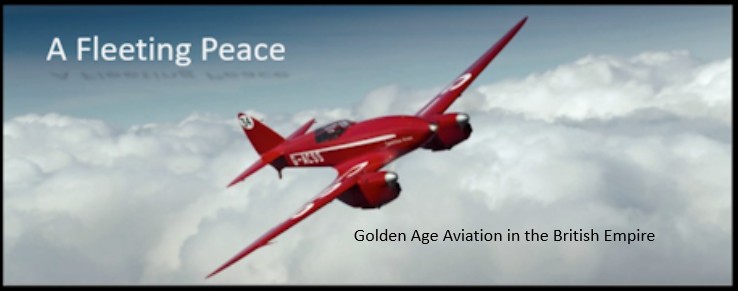
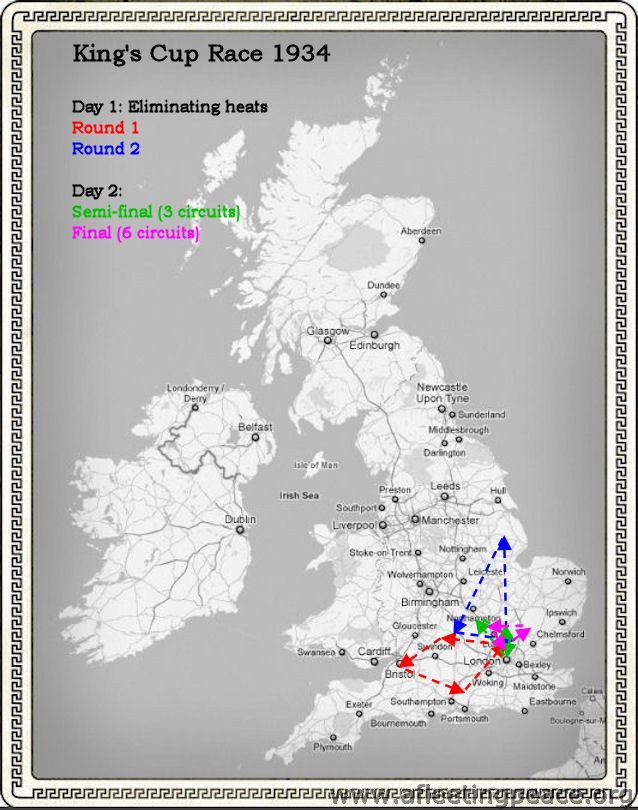

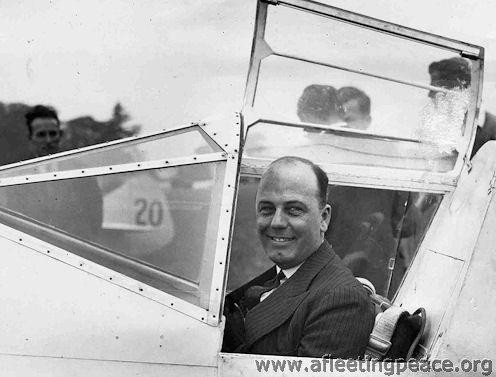
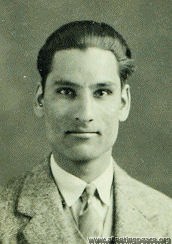 photo: 1933, aged 24
photo: 1933, aged 24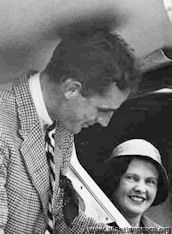 (with Mrs B)
(with Mrs B)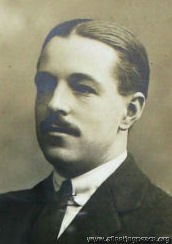 photo: 1912, when a Lieutenant in the Black Watch, aged 26
photo: 1912, when a Lieutenant in the Black Watch, aged 26 photo: 1930, aged 33
photo: 1930, aged 33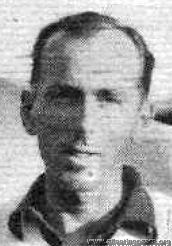 photo: 1937, aged 27
photo: 1937, aged 27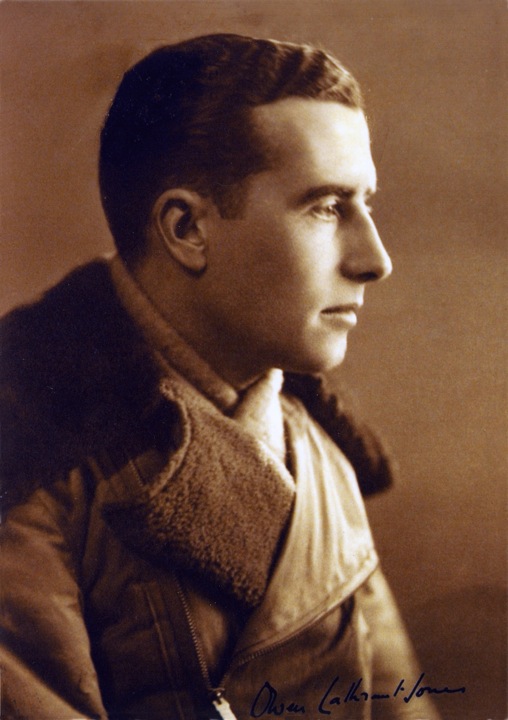
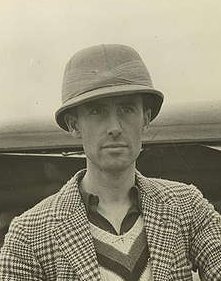 1934
1934 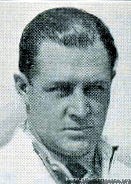
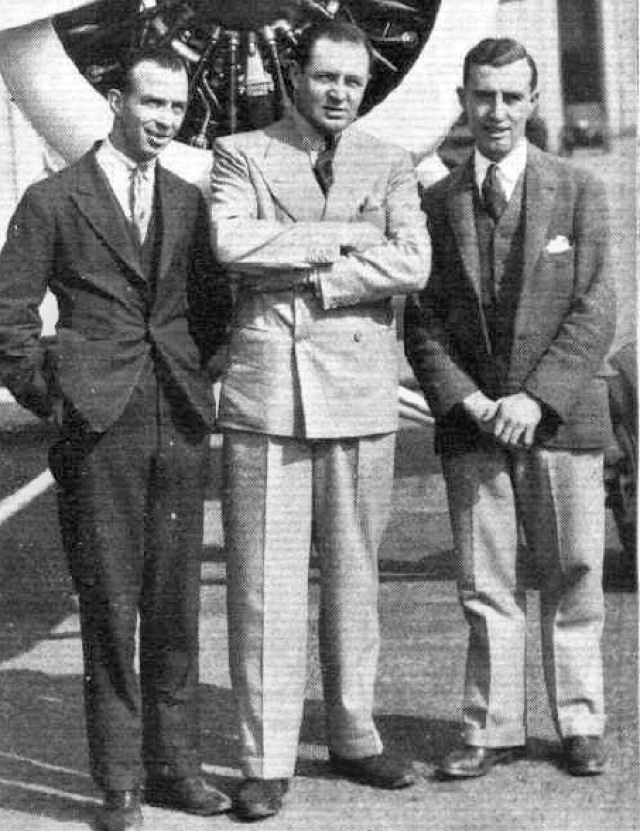
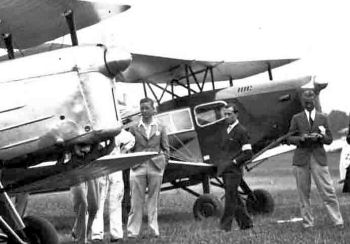
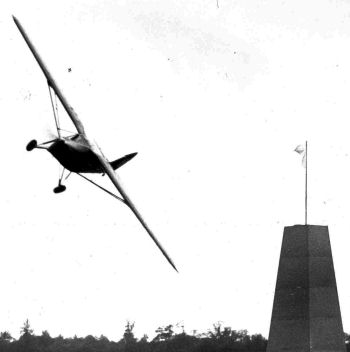
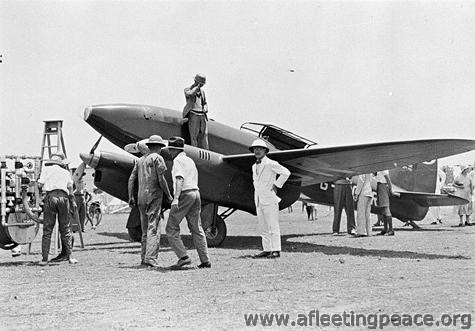
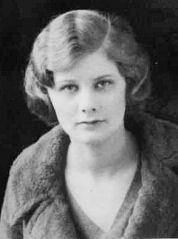
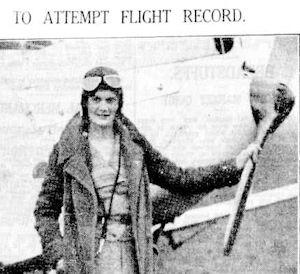
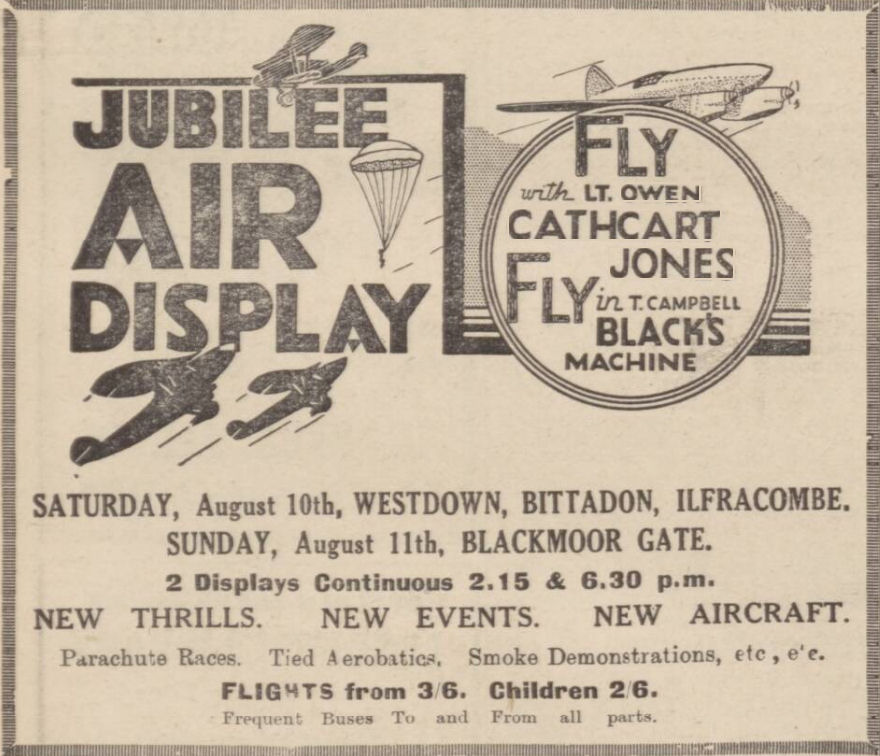
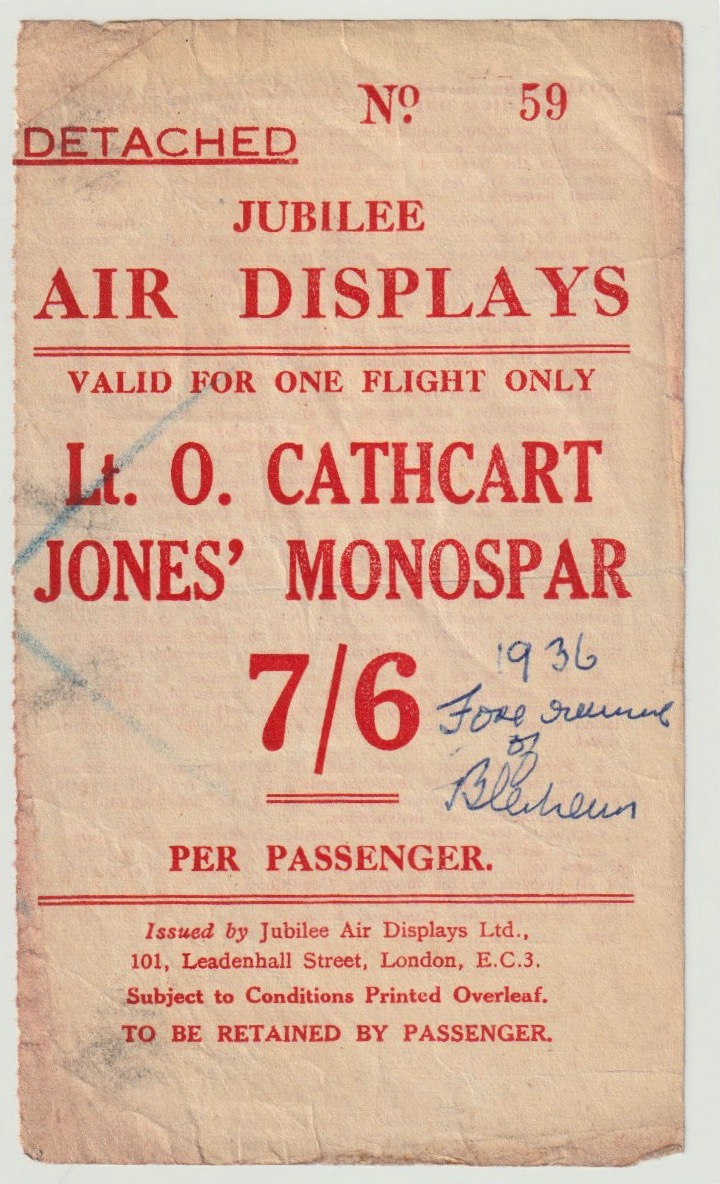 via Joss Mullinger
via Joss Mullinger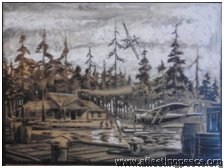
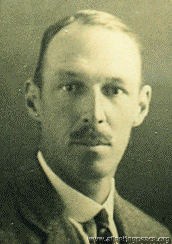 photo: 1927, aged 35
photo: 1927, aged 35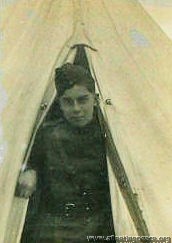
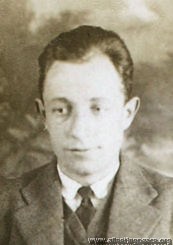 in 1932, aged 23
in 1932, aged 23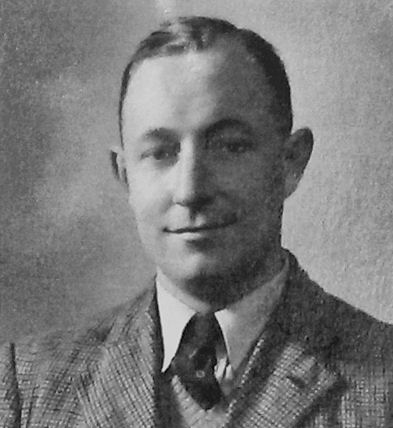
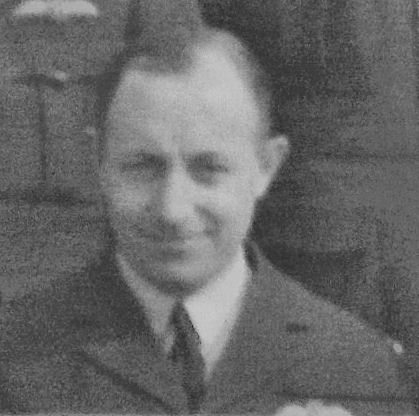
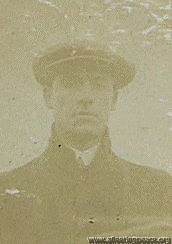 1911, aged 29
1911, aged 29 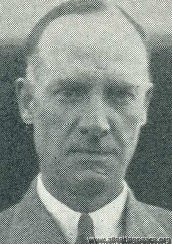 1936, aged 54
1936, aged 54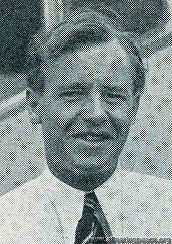 1936
1936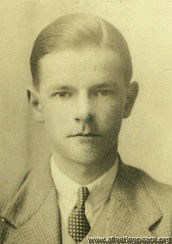 1931, aged 18
1931, aged 18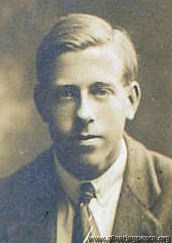 1929, aged 23
1929, aged 23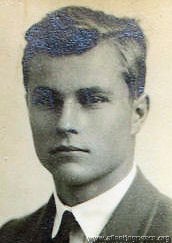 1931, aged 25
1931, aged 25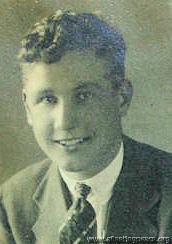 1932, aged 20
1932, aged 20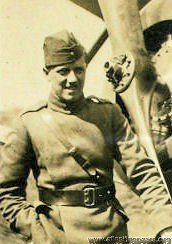 1917, when a 2nd Lieut in the RFC, aged 20
1917, when a 2nd Lieut in the RFC, aged 20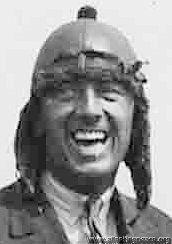 1928, aged 31
1928, aged 31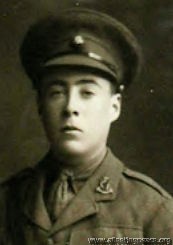 1916, when a 2nd Lieut, Royal Irish Rifles, aged 18
1916, when a 2nd Lieut, Royal Irish Rifles, aged 18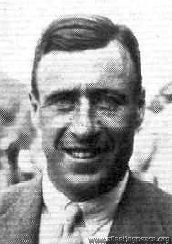 1931
1931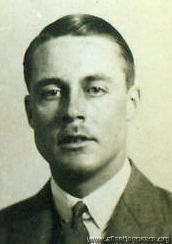 1927, aged 23
1927, aged 23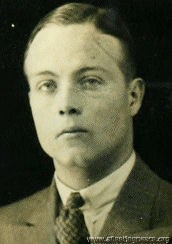 1933, aged 20
1933, aged 20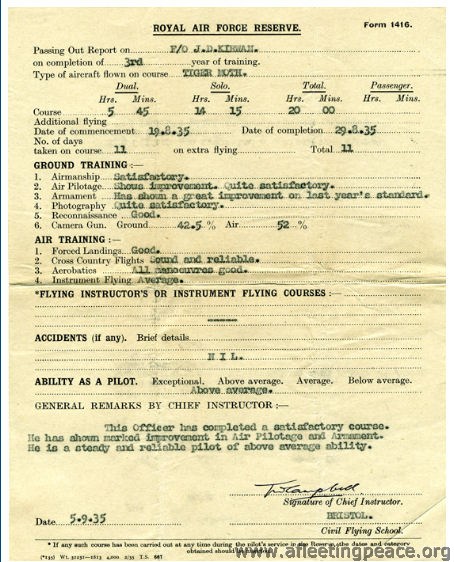

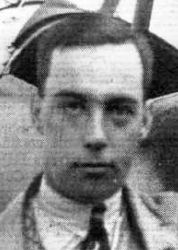

 "To the beloved and wonderful memory of Haliburton Hume Leech".
"To the beloved and wonderful memory of Haliburton Hume Leech".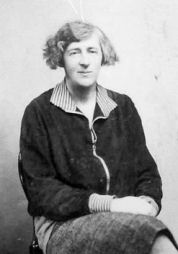
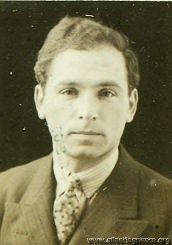 1930, aged 34
1930, aged 34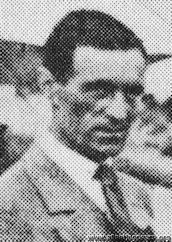
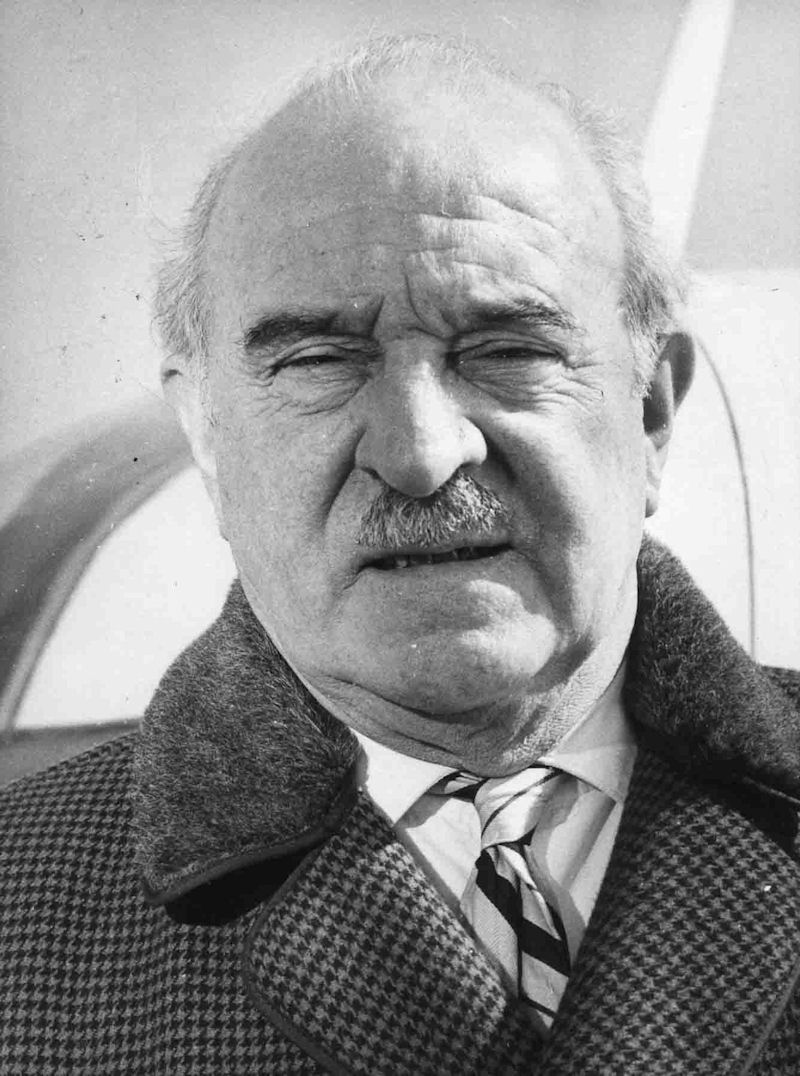
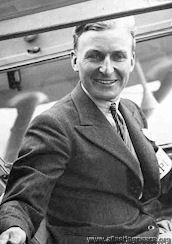
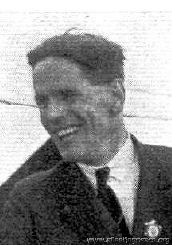 1937, aged 30
1937, aged 30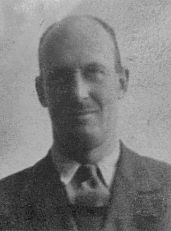
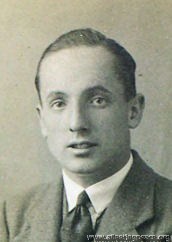 1932, aged 21
1932, aged 21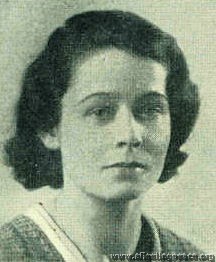
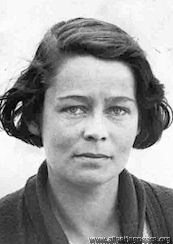 1934, aged 29
1934, aged 29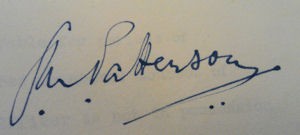

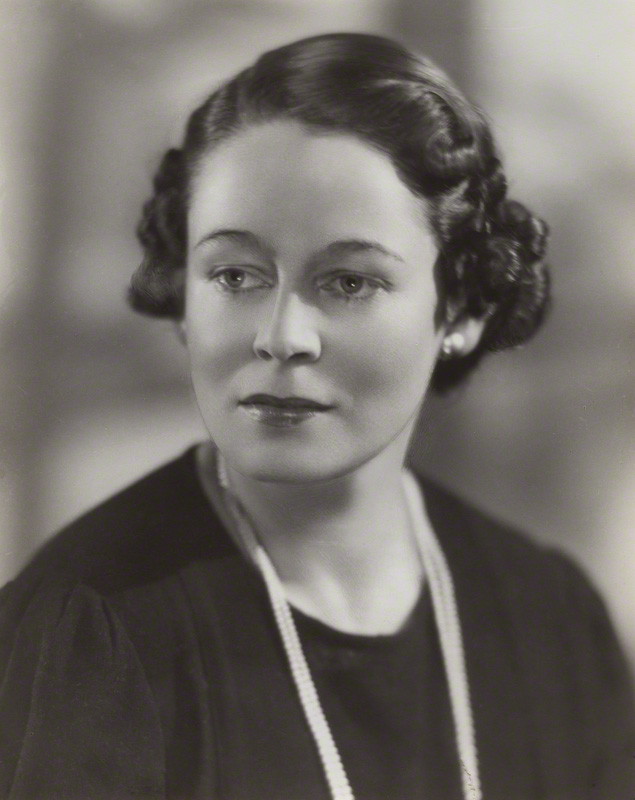
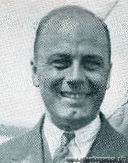 1930, aged 32
1930, aged 32 King's Cup 1934; sans trilby, for once
King's Cup 1934; sans trilby, for once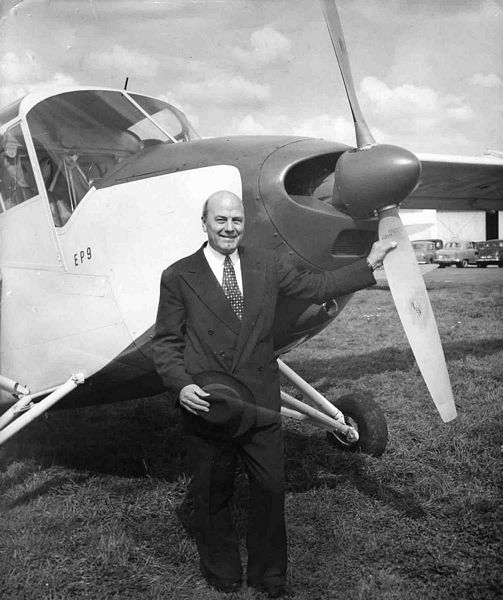 In 1956, with the EP.9 'Prospector'. And trilby.
In 1956, with the EP.9 'Prospector'. And trilby.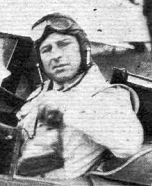
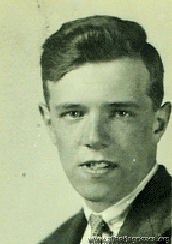
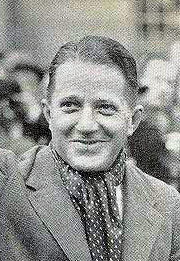 1936
1936![Kings Cup 1938 Tommy Rose [0122-0170]](/images/gallery/air%20races/preview/333s333/Kings%20Cup%201938%20Tommy%20Rose%20%5B0122-0170%5D.jpg)
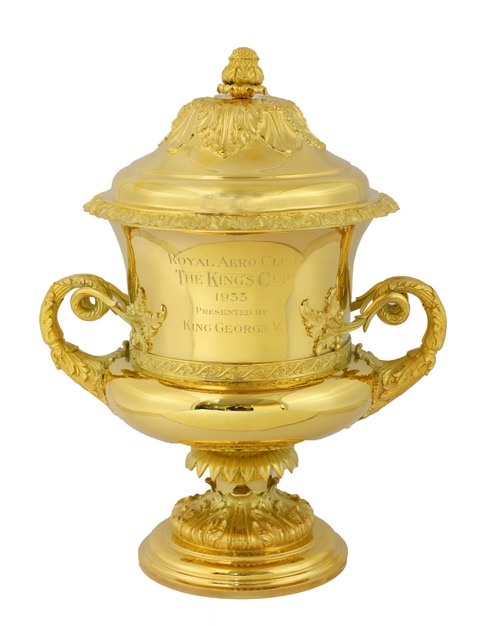
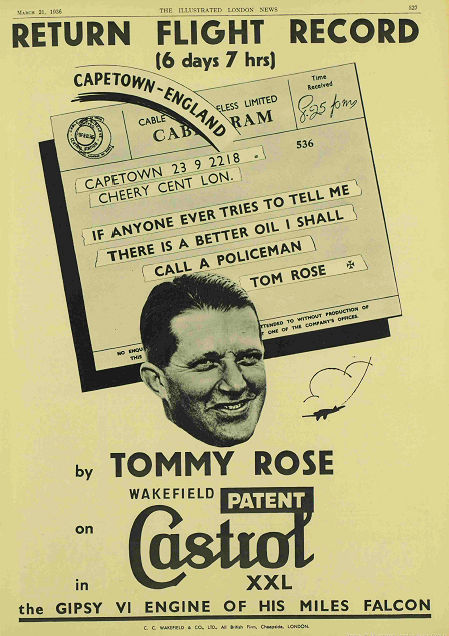
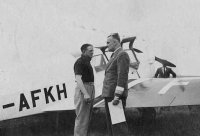
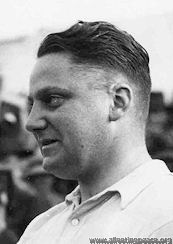
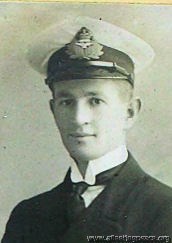 1916, when a Flight Sub-Lt in the Royal Navy, aged 24
1916, when a Flight Sub-Lt in the Royal Navy, aged 24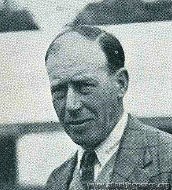 1936
1936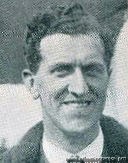 1930
1930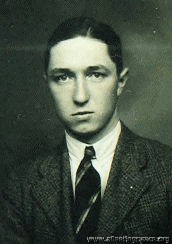 1931, aged 22
1931, aged 22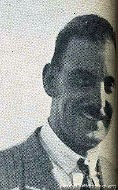 1936
1936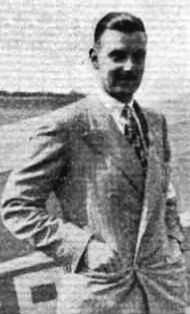 1935 - both 'Flight'
1935 - both 'Flight'
 With thanks to Gary Wright
With thanks to Gary Wright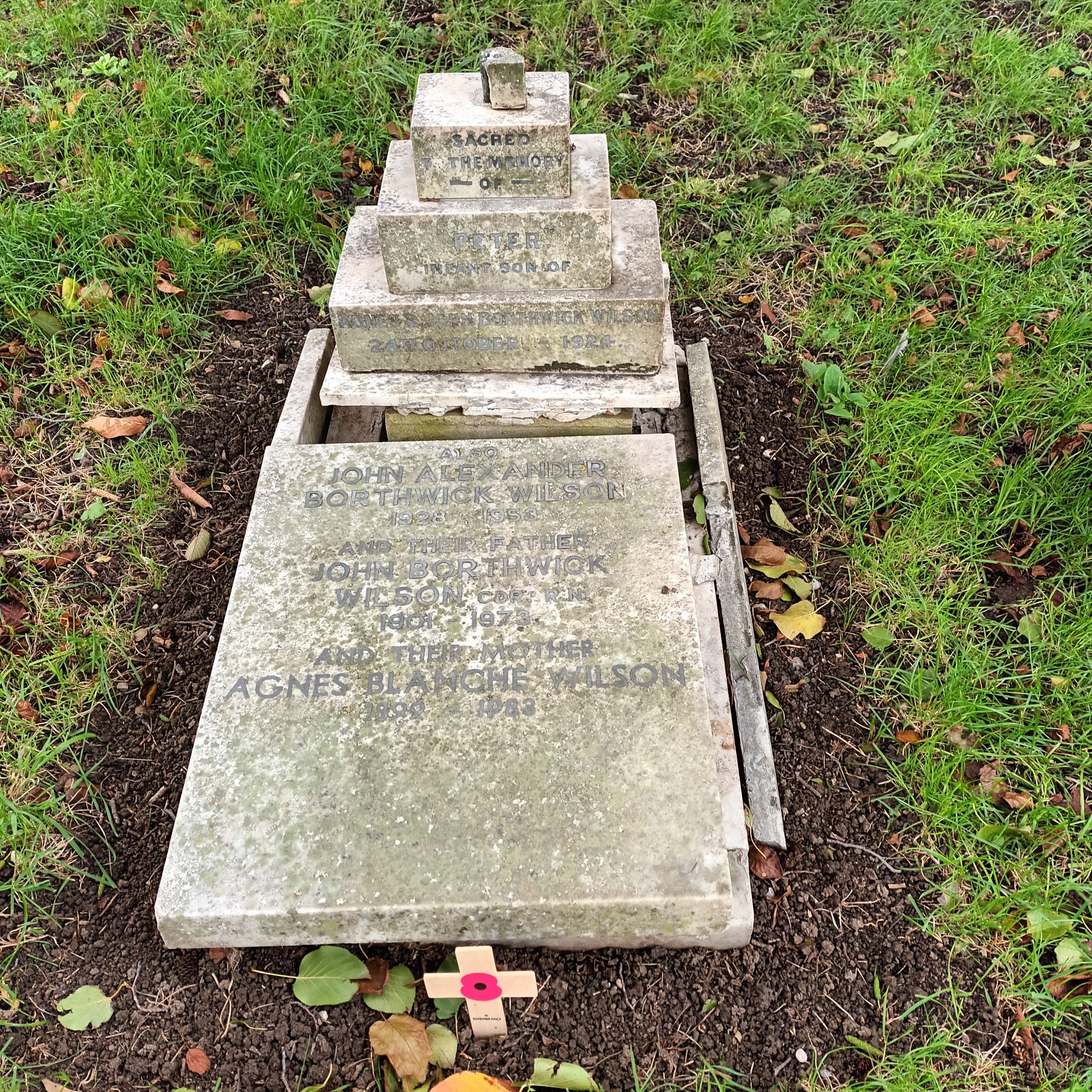
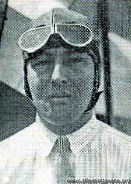 1930, aged 42
1930, aged 42